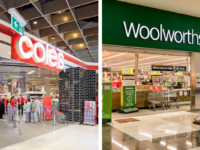 Woolworths are certainly supplying us with fodder! I read with interest Gary Mortimer’s article on Lidl this week. To put a somewhat different spin on the possible outcome if they do indeed enter Australia, please read on.
Woolworths are certainly supplying us with fodder! I read with interest Gary Mortimer’s article on Lidl this week. To put a somewhat different spin on the possible outcome if they do indeed enter Australia, please read on.
On March 9, Chris Pash from Moody’s wrote that since opening its first Australian store in January 2001, Aldi’s store base has grown to more than 360.
Based on Nielsen estimates, Aldi now has an eight per cent share of Australia’s grocery market and an 11 per cent share across the east coast, which includes NSW, Victoria, and Queensland. Its gross annual sales reached more than $5 billion in 2014.
Moody’s expects Aldi’s store growth on the east coast to continue at five per cent to six per cent a year over the next five years. This is about double that expected for Woolworths and Coles.
Enter Lidl, with annual sales of $128 billion – a formidable competitor. While not confirmed, they are applying for home brand trademarks and they are apparently talking to logistics companies.
Traditionally, Lidl’s main competitor has been Aldi. However, Lidl is sure to take market share from Coles and Woolworths, who are already feeling the pinch as Aldi grows. Woolworths’ first quarterly decline in sales in 20 years, announced recently, resulted in CEO, Grant O’Brien, falling on his sword this week.
Aldi has been clever to position many of its stores close to Woolworths and Coles. Will Lidl do likewise? Or do they primarily plan to take on Aldi? With Aldi nowhere near saturation point, it might make sense for them to open where there is no Aldi and attempt to lock them out.
Wherever Lidl open, in the Australian environment they are inevitably going to steal market share from Coles and Woolworths, while Aldi will continue to do likewise.
Rumour has it that Coles and Woolworths are in full flight strategising mode. The population is not growing in proportion to the market share that they are and will be losing. The predicament is what to do. If they downsize, this has huge consequences relating to scale.
Their entire logistics operation is geared to a certain projected growth in volume. Their staffing strategy is also geared towards at least current volumes.
We have seen Woolworths shedding 1200 jobs recently and a few senior executives jumping ship, including the CEO.
There’s more than a small sense of irony in the fact that they are shedding jobs but advertising on TV for new recruits.
If Woolworths and Coles cannot deliver a meaningful strategy to their teams, more people will leave voluntarily as sales tighten, even before the chains start on redundancies.
Going upmarket is not a strategy they can follow. The market is too small. Rationalising their ranges will mean reduced sales. Already, many people are shopping for basics at Aldi, and going to the other chains for goods that Aldi does not stock.
Diversifying is another option, but this is not so easy, as Woolworths has found with Masters. Bunnings is a well-oiled retail operation and proving to be a formidable competitor.
So, what is the prognosis? One scenario is that Coles and Woolworths merge and that many stores are then closed. Wesfarmers must surely be considering this option.
Another is that they both shrink and/or look to diversify into a market where they wouldn’t have a huge competitor – ie, do the opposite of what Woolworths did when it pitted its Masters brand against Wesfarmers’ very well established Bunnings.
And there are probably a whole lot more options that they are considering. Meanwhile morale at all levels in the organisations will be a challenge in the months and years to come.
Stuart Bennie is a retail consultant at Impact Retailing and can be contacted at stuart@impactretailing.com.au or 0414 631 702
















